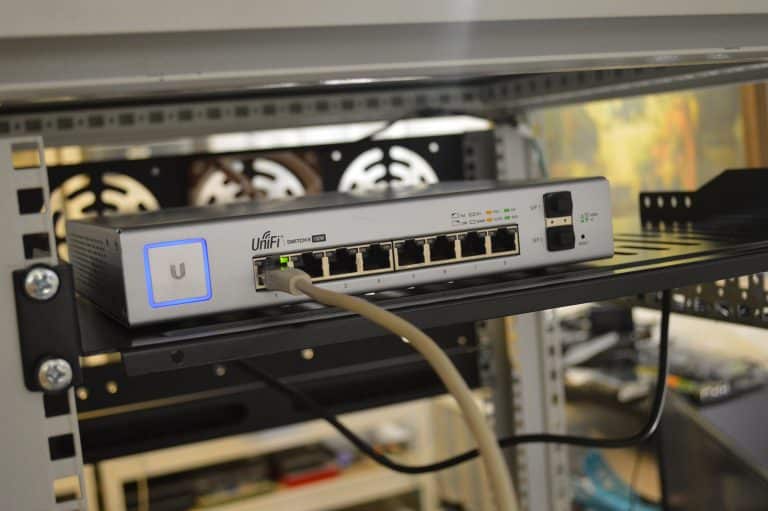Ethernet is essentially a standard communication protocol that is used to connect computers together in local area networks (LANs). It communicates with and receives data through the use of cables. Communication between two or more distinct types of network cables, such as from copper to fiber optic and vice versa, is made easier as a result of this technology.
It’s possible that you’re wondering what an Ethernet media converter is. In a nutshell, an Ethernet media converter is a device that allows for the transmission of data between two different forms of network media. The media converter is made out of a circuit card that is housed within a casing.
The card normally contains two ports, which can be used to connect two different types of network cables to one another. If you have any queries about the functionality of fiber media converters or Ethernet networks, this post will try to address them as best as it can.
What is an Ethernet Network, and how does it work?
As previously stated, an Ethernet network is used to establish a local area network and to connect numerous computers or other devices such as printers, scanners, and other similar devices to a single network.
This is accomplished through the use of fiber optic cables in a wired network, whereas it is accomplished through the use of wireless network technology in a wireless network.
A variety of topologies, including star, bus, ring, and others, are used in an Ethernet network.
What Is the Difference Between the Different Types of Ethernet Networks?
Connecting Ethernet equipment using CAT5/CAT6 copper wires to a fiber optic cable is accomplished using fiber optic media converters. An Ethernet network is typically active within a 10-kilometer radius of its center. The use of fiber optic cable has substantially increased the distance that the network can traverse as a result of this expansion. The following are some examples of Ethernet networks:
1) Fast Ethernet
As the name implies, this is a very fast internet connection, capable of transmitting and receiving data at speeds of up to 100 Mbps. These networks are typically supported by twisted pair or cat5 cable, depending on the configuration. If a laptop, camera, or any other device is connected to a network, it will run at 10/100Base Ethernet speeds on the Ethernet side of the link and at 100Base on the fiber side of the link, respectively.
2) Gigabit Ethernet
This sort of network transmits data at even faster rates, at around 1000 Mbps or 1Gbps than the previous type of network. In comparison to Fast Ethernet, which is being phased out, Gigabit speed represents a significant improvement. In this form of network, the data transfer speed is determined by the contribution of all four pairs in the twisted pair cable. When using CAT5e or other modern cables to connect video calling systems, this network type finds a lot of use in the industry.
Fiber cables with a 1000Base SX rating for multimode systems and a 1000Base LX rating for single-mode systems can be utilized for extended networks with a distance of up to 500m.
3) 10-Gigabit Ethernet
This is an even more advanced and high-speed network type, capable of transferring data at a rate of 10 Gigabits per second or higher. It is supported by twisted pair cables, such as CAT6a or CAT7, as well as fiber optic cables, among others. This network’s coverage area may be increased to around 10,000 meters by utilizing fiber optic cable.
4) Switch Ethernet
This form of network necessitates the use of a switch or hub. In addition, a standard network cable is used in this instance, rather than a twisted pair cable. Network switches allow data to be transferred from one device to another without interfering with the operation of any other devices on the network.
What Is the Difference Between the Different Types of Ethernet Cables?
Ethernet networks can be either wired or wireless in nature. There are many different types of cables that can be used in a wired network. Here are a few examples of Ethernet cables that are often used:
- 10Base2: This is a narrow twisted pair coaxial cable that is used for data transmission.
- 10Base5: A thick twisted pair coaxial cable is used for 10Base5.
- 10Base T: This is a twisted pair cable that has a maximum speed of around 10 megabits per second.
- 100BaseTX: This is a twisted pair cable that can transmit data at a rate of 100 Mbps.
- 100Base FX is a fiber optic technology that provides a data transfer rate of 100 megabits per second.
- 1000Base SX is a fiber-optic protocol that operates on a wavelength of 850nm for multimode networks and is based on the 1000Base SX standard.
- 1000Base LX is a fiber-optic protocol that operates at a wavelength of 1310 nm for multimode networks and up to 1550 nm for single-mode networks, with a maximum transmission distance of 1000 meters.
How Do Ethernet Media Converters Benefit You? What Are the Benefits of Using an Ethernet Media Converter?
- The tiny and compact size of Ethernet media converters allows them to be installed as stand-alone devices or in a media converter chassis. Because of their small and compact size, they may be placed in tight spaces.
- In industrial applications, they can also be mounted on a wall or on a DIN rail with relative ease.
- Allowing a user to communicate data over lengths of up to 100 kilometers is made possible through the use of fiber optic conversion.
- They can be used to convert any IP device, such as a camera, to a fiber-optic connection.

